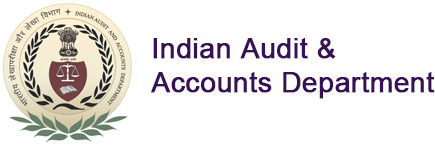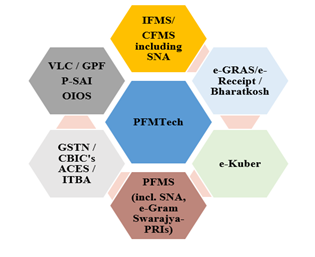Blue Carbon Accounting By Dr. Nanda Dulal Das, Director
1.1 Valuation of Ecosystem Services
Human beings thrive in diverse ecosystems but often simplify these ecosystems over time. This simplification occurs through targets interventions such as developing intense agricultural systems for fewer crops, reducing green and open spaces for economic growth, food security and industrialisation. These ecosystems provide numerous use values through food, medicine, clothing materials, etc. and non-use values through flood control, water purification, pollution reduction etc. These ecosystem services are sometimes also classified as provisioning, regulating, cultural and habitat services. Studies have valued these ecosystem services in monetary terms and R. de Groot et al. (2012) have shown that coral reefs and coastal ecosystems provide the most valuable ecosystem services when compared with other ecosystems like forest, grassland or any other (Figure 1). Coastal ecosystems like mangroves, sea grass meadows, salt marshes and coral reefs sequester large quantum of carbon, providing important regulating services. They are thus referred to as ‘Blue Carbon Ecosystems (BCEs)’ (UNEP, 2009).

Figure 1: Total Monetary Value (in international $/hectare/year/PPP corrected; range shown in brackets and average value shown by star) of bundle of services in different ecosystems {Source: R. de Groot et al. (2012)}
1.2 Importance of Blue Carbon Ecosystems (BCEs) and Global Policy Paradigm
With less than 2% of ocean area coverage or 5% of the global land area coverage, vegetated coastal wetlands buried nearly 50% of carbon in ocean sediments (Duarte, 2005)12. Despite the prominent role of the ‘Blue Carbon Ecosystems’ in the global share of Carbon trapping or sequestration, propagation, and protection of BCEs as one of the Climate Change mitigation measures had remained unrecognised for long.
Conference of Parties (COP) 16 of the United Nations Framework Convention for Climate Change (UNFCCC) held at Cancun, Mexico in 2010 highlighted the importance of these ecosystems. Besides, a site-level methodology for afforestation and reforestation of degraded mangrove habitats under the Kyoto protocol was also approved in 2011.. This was further institutionalised through the Intergovernmental Panel on Climate Change (IPCC)’s supplementary guidelines for National Greenhouse Gas Inventory: Wetlands in 2013, UNFCCC’s Warsaw Framework for Reducing Emissions from Deforestation and forest Degradations in Developing Countries (REDD+)13 and Paris Climate agreement in 2015 (Herr, D. Vegh, T. Unger M. V. 2019).
Under the Paris Climate Agreement, 58 countries announced their GHG emission14 reduction commitments through their Nationally Determined Contributions (NDCs) which involved BCEs (Crooks, S. Windham-Myers, L. Troxler, T.G. 2019, UNFCCC 2010). India has committed to create an additional Carbon sink of 2.5 to 3 billion tonnes of CO2 equivalent, through additional forest and tree cover by the year 2030 (MoEFCC15, 2022). Thus, expanding BCEs and accounting for carbon stocks in the BCEs would become increasingly important. Involving local communities in this exercise would be an important process component, ensuring result-based payments to them at a regular interval.
1.3 SEAA-EA Framework for Blue Carbon Accounting and the Indian Context
While several ecosystem-based accounting methodologies are available around the world, many nations are adopting the United Nations’ System of Environmental Economic Accounting- Ecosystem Accounting (UN SEAA-EA) framework to increasingly account for ecosystem services in their country16. Five core accounts, i.e. extent, condition, services, monetary asset, and thematic accounts are the building blocks of SEAA-EA framework (United Nations Statistics Division n.d.), and these are equally applicable for accounting of BCEs as well. A wholesome accounting for the BCEs would require using much of the above five core aspects. A thematic BCE accounting approach is provided below (Table 1):
Table 1: Components in Carbon accounting of the BCEs
| BCEs | Major BCE Carbon Trapping Systems | Opening Carbon Stock | Interaction with other Carbon Systems | Other Carbon Systems |
|---|---|---|---|---|
| Mangroves/ Seagrasses/ marshes | In sediment | Changes through unmanaged/managed expansion/contractions of BCEs, reclassifications, and catastrophic losses | Carbon accumulated in the atmosphere | |
| In living and deadbiomass | ||||
| In ocean water | ||||
| Net Carbon Balance | Carbon accumulated in the economy | |||
| Closing Stock |
Source: Modified from the (United Nations et al. 2021), to analyse parts relevant to Blue Carbon Accounting
Netherlands has rolled out a SEAA EA Carbon accounts for the Netherlands and Carbon Accounts have also been prepared in Indonesia (Statistics Netherlands and Wageningen University 2017, United Nations Statistics Division n.d.). India has applied the SEAA EA Framework under the Natural Capital Accounting and Valuation of Ecosystem Services (NCAVES) Project and through use of different ecosystem accounts carbon retention by the India’s forest sector has been calculated at 4385 billion INR in 2017-18 (MoSPI 2021). The Government Accounting Standards Advisory Board (GASAB) in India has also highlighted the importance of ecosystem-based accounting and need for accounting of these crucial aspects in India (Government Accounting Standards Advisory Board (GASAB) 2020)
1.4 Community Engagement in Blue Carbon Projects and Payment for Ecosystem Services
The Post-2012 (i.e. end of the first commitment period of the Kyoto Protocol) and REDD+ (with focus on creating forest carbon stocks in developing countries) framework established a payment-based incentive mechanisms for the developing countries to develop their carbon sinks through conservation, sustainable management, and enhancement of forest carbon stocks (UN-REDD 2016). Several Blue Carbon projects have been popular as they store and trap multiple times of carbon (for example, mangroves up to five times) than the terrestrial forest ecosystems (The World Bank 2023). “Mikoko Pamoja Project” in Kenya; “Markets and Mangroves” project in the Mekong Delta area of Vietnam and “India Sundarbans Mangrove Restoration” are successful examples of mangrove conservation projects, earning carbon credits for the local communities (Wylie, Sutton-Grier and Moore 2016). A national carbon account using SEAA-EA or a related carbon accounting framework can provide clear measurement of national achievements towards climate change mitigation and ensure simultaneous engagement of local communities in BCE conservation.
- 12. As cited in Crooks, S., Windham-Myers, L., Troxler, T.G. 2018
- 13. The ‘+’ symbol stands for additional forest related activities like forest conservation and enhancement of forest carbon stock, which also include Mangroves.
- 14. Greenhouse Gas emission
- 15. Ministry of Environment, Forest and Climate change.
- 16. In 2022, 41 countries were stated to be implementing the SEAA EA and/or related thematic accounts (UN Statistical Commission 2023).
Continue Reading

From the Editor's Desk
Forty years ago, recognising the knowledge driven nature of our Institution, the quarterly publication of the “Journal of Management and Training” was initiated....

Reporting for impact - Improving readability of audit reports
The need for enhancing the value and impact of CAG’s audit has been an enduring concern...

Application of Machine Learning Algorithms in Audit
There has been a tremendous explosion of data available with public sector entities over the last 20 years...

Digital Accountability: Harnessing Photo Forensics for e-Services Audits
In an era where technology intertwines with governance, the shift towards online portals for delivering public services has been monumental...
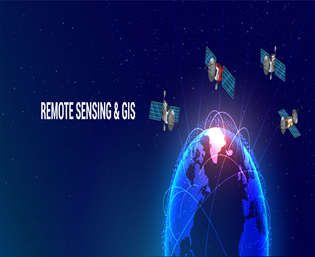
Accessibility of Cutting-Edge Technologies in GIS and RS
The democratization of cutting-edge technologies such as Geographic Information Systems (GIS) and Remote Sensing stands as a huge shift, empowering...

Beneficiaries of Social Schemes and Assessment
Social programmes have evolved over the decades, aiming for increased coverage, higher entitlements, and better design by using technology for targeting...

Generative AI: The Age of Artificial Imagination
In the vast landscape of artificial intelligence, few innovations have captured the imagination of the humans and sparked as much excitement as...
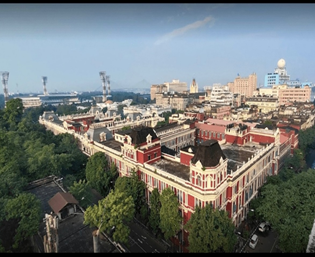
A 1.5-year-old DAG in a 150-year-old Institution
It was on 14th December 2022 when our posting orders came while I was still attached as an Assistant Director in the CRA Wing in the Headquarters Office, New Delhi....
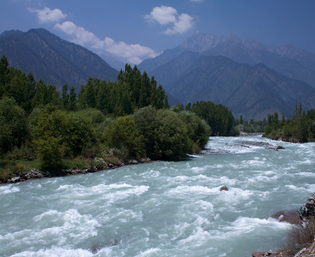
Water Resource Accounting in India
Water: The word itself is an indication of life on the planet. About 60% of the human body contains water...
